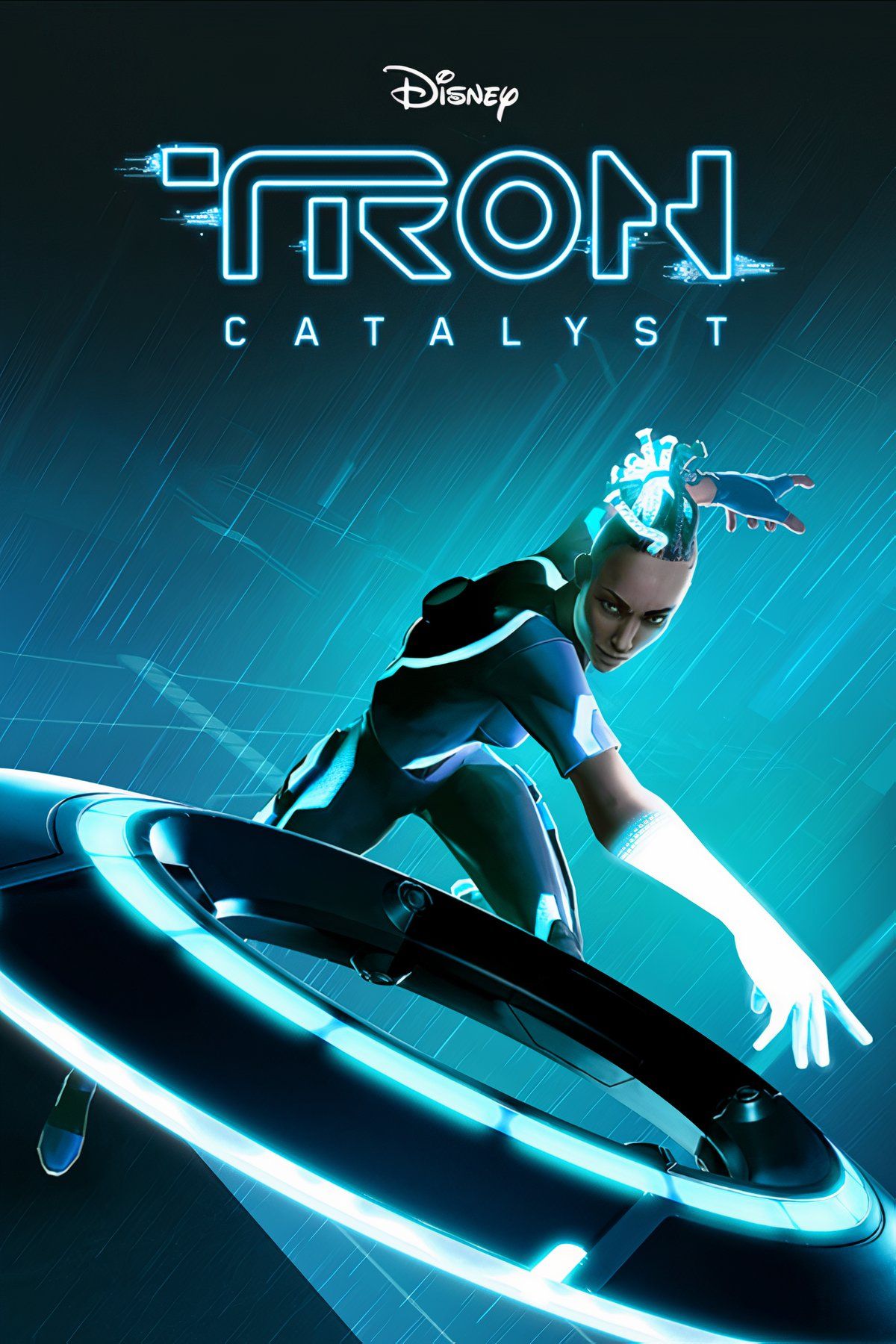For a franchise that’s so deeply rooted in gaming culture, it’s honestly surprising that Tron doesn’t have a major presence in the modern video game landscape. Although there have been more than 10 Tron games in the last 40 years, the majority of these titles, like Discs of Tron and Tron: Solar Sailer, are either fairly old, or they’ve been largely forgotten. The neon-drenched virtual world of Tron is pretty much the perfect setting for a video game, but only a few Tron games have managed to successfully adapt the franchise to an interactive medium. That said, the latest addition to the Tron series, Tron: Catalyst, has accomplished this task better than most.
Tron: Catalyst is a 2.5D isometric action-adventure game that was made by Bithell Games in collaboration with Disney and Big Fan Games, a subsidiary of Devolver Digital. Unlike other recent titles based on Disney properties, this game is mostly linear and has a relatively constrained scope. Tron: Catalyst only takes around 10 hours to complete, and its replay value is fairly limited. This doesn’t necessarily mean the game is bad, however. On the contrary, it’s actually pretty fun, and its simplified approach to game design is quite refreshing in an industry filled with 50-hour RPG behemoths.
Tron: Catalyst Can Be Enjoyed Even Without Knowing Anything About Tron
In Tron: Catalyst, players play as Exo, a female courier who works in the capital city of the Grid, known as Vertical Slice. After carrying a package that explodes in her face, Exo gets trapped in a time loop and gains special “Glitch” powers that give her an extraordinary level of strength and skill. With the help of some friends she makes along the way, Exo tries to put an end to this cycle of time loops, all while she attempts to save the world from a mysterious guard named Conn, who has a malicious agenda of his own.
As they progress through the game, players may encounter a lot of lore-specific terms that they aren’t familiar with. Fortunately, Tron: Catalyst features a handy codex that provides detailed descriptions of all the factions, characters, locations, and concepts in the game, and it can be accessed at any time through the game’s menus. This codex makes it a lot easier to understand what’s going on in Tron: Catalyst, and it allows players to get a broad idea of who the new characters introduced in the game are.
Tron: Catalyst takes place in the Arq Grid, a new location that was introduced in the game’s prequel, Tron: Identity. The Arq Grid is different from the Grid that the Tron films are set in.
Even though it’s technically a sequel to Bithell Games’ 2023 visual novel Tron: Identity, Tron: Catalyst can be enjoyed without having any prior knowledge of the Tron franchise. In spite of the fact that I’m not well-versed in the lore of the series, I was still able to understand the plot of Tron: Catalyst without any issues, thanks in part to the game’s codex feature. Sure, Tron: Catalyst‘s narrative isn’t particularly amazing, but the writing in the game is solid and not overly convoluted, so it’s fairly accessible for newcomers to the franchise.
If there’s one area where Tron: Catalyst‘s story stumbles, however, it’s in its presentation. There are very few animated cutscenes in Tron: Catalyst, and most of the game’s dialogue is presented through static sprites. This isn’t necessarily a bad thing, per se, but it would’ve been nice if each character had more facial expressions and poses. On that note, it would’ve been great if the characters themselves were more memorable, as well. The protagonists and antagonists in Tron: Catalyst are decent, but players probably won’t form a strong connection with any of them after finishing the game. At the very least, though, the voice acting in Tron: Catalyst is pretty good.
When it comes to gameplay, Tron: Catalyst‘s combat is enjoyable and straightforward, but it doesn’t offer anything revolutionary. Throughout the entire game, players have access to only one permanent weapon: the Identity Disc. Some people may initially be disappointed by the lack of weapon variety in Tron: Catalyst, but Bithell Games has added an ample amount of mechanics to give more depth to the game’s combat. Players can use the Identity Disc in a handful of ways. They can wield it like a melee weapon, throw it like a boomerang, or hold it to parry attacks. Players can unlock new abilities to increase the effectiveness of their Identity Discs by collecting data shards, which can be found throughout the game’s environments.
Data shards can also be obtained by completing certain challenges during combat or by defeating enemies.
Tron: Catalyst’s Combat is Fun, But Flawed
Although it’s largely enjoyable, Tron: Catalyst’s combat is held back by some significant balancing issues. Using the Identity Disc for long-range attacks, for example, is pretty much pointless, since it does very little damage when thrown. The parrying system, on the other hand, suffers from the exact opposite problem. If players unlock all the available parry abilities in the game, they can kill most enemies in one hit just by parrying their attacks with the Identity Disc. This makes the boss fights in Tron: Catalyst ridiculously easy, to the point that they can be completed in seconds.
As they fight their way through enemies, players can explore four large areas in Tron: Catalyst, which they can traverse either on foot or on a Light Cycle. Although none of them are explicitly listed in Tron: Catalyst’s in-game map, there are a few side quests in the game, as well. In one of these optional quests, I was able to unlock a harmless Byte companion that followed me around for the remainder of my playthrough. Due to the time loop premise of the game, Tron: Catalyst is bound to have some amount of repetition in it, even when it comes to these quests. However, thanks to the game’s fast-paced movement systems and short runtime, it never really gets boring to explore places, and none of the levels last longer than necessary.
While I was exploring the areas in Tron: Catalyst, I didn’t come across a lot of bugs and glitches, and the game ran at a stable 60 FPS. There were, however, a few instances where my character got stuck in between furniture or rocks and was unable to move. I had to restart the level I was on in order to fix the issue. Luckily, the game autosaved every few minutes, so I never really lost any major progress due to this glitch.
On the whole, Tron: Catalyst feels like a successor of sorts to the classic AA games from the Xbox 360 generation. It’s a simple and fun action-adventure game that doesn’t have any bloat, but it has a handful of notable problems that hold it back from greatness. Tron: Catalyst is being sold for just $25, and honestly, it’s worth the asking price. It can keep players entertained for a day or two, even if they’re a newcomer to the Tron franchise.

- Combat is simple but fun
- Fast-paced, enjoyable movement
- Decent story and good voice acting
- Can be enjoyed without knowing anything about Tron
- Doesn’t outstay its welcome
- Some balancing issues in combat
- A few minor bugs and glitches
- Limited presentation
- Unmemorable cast of characters
Tron: Catalyst is available now for PlayStation 5, Xbox Series X/S, Nintendo Switch, and PC. Game Rant was provided with an Xbox Series X/S code for this review.


